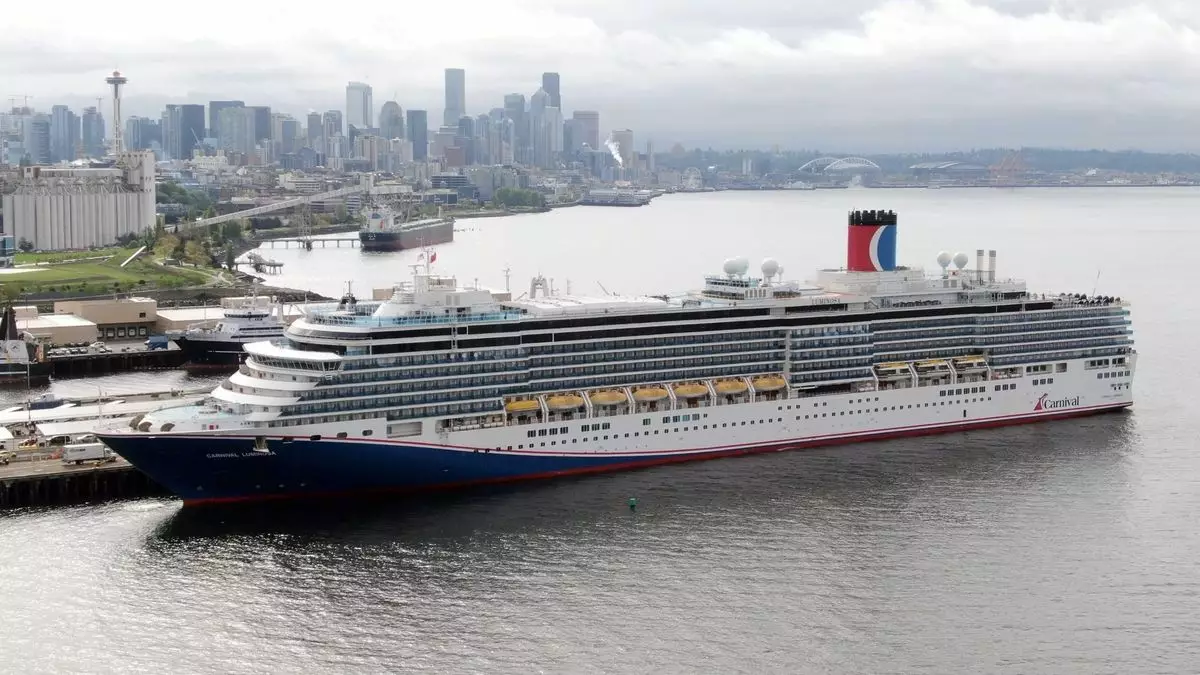In a landscape characterized by unpredictability and economic fluctuations, Carnival Corp. is a beacon of resilience, showcasing robust performance figures that defy typical expectations for a cruise company navigating turbulent waters. CEO Josh Weinstein recently highlighted the company’s impressive financial outcomes, emphasizing a record-breaking first-quarter revenue of $5.8 billion—a staggering increase of over $400 million from the previous year’s figures. This remarkable growth can be attributed to not only high demand from close-in bookings, but also the notable surge in onboard spending, which has risen by 10% year-over-year.
Throughout this quarter, demand for Carnival’s offerings has not merely stabilized; it has flourished. The patterns of consumer behavior indicate an unwavering confidence in leisure travel, buoyed by a combination of pent-up demand and the desire for immersive experiences. Such consumer enthusiasm was palpable, particularly in March, where onboard spending showed no signs of decline. This trend is not just encouragement for Carnival but signals an operational vigor that many industries can only aspire to achieve under similar economic duress.
A Deeper Look into Operational Success
CFO David Bernstein further reinforced this narrative by mentioning that Carnival’s European brands are outpacing previous performance benchmarks, demonstrating both impressive occupancy rates and pricing strategies that resonate with customers. During this quarter, Carnival enjoyed a solid occupancy rate of 103%, slightly surpassing the previous year’s figures. This metric reflects not only a revival of travel interests but also an adept forecasting strategy on the company’s part, particularly during the critical Wave season when early bookings set the stage for future successes.
Weinstein’s commentary on the successful outcomes of the first three months of the year spoke volumes. With 2025 inventory booked at an unprecedented 80% and record prices, the groundwork for sustained profitability seems well established. This strong booking trajectory transcends mere sales success; it epitomizes strategic foresight, which is crucial for navigating future uncertainties in the travel sector.
Navigating Uncertainties: A Robust Response Plan
While Carnival Corp. celebrates its achievements, it is not blind to the looming macroeconomic and geopolitical challenges. Weinstein emphasized the company’s readiness to adapt to potential shifts in the market landscape. He maintains that internal indicators and market signals currently do not suggest any impending downturns, a sentiment echoed by analysts like Patrick Scholes from Truist Securities. However, the reality that booking momentum appears to have slowed since December is a cautionary note, albeit coupled with consistent pricing strategies.
Furthermore, despite achieving a commendable operating income increase to $543 million, Carnival did report a net loss of $78 million due to heightened expenses from debt modifications. The proactive refinancing of $5.5 billion in debt—resulting in $145 million in annualized interest savings—is an optimistic maneuver that reflects Carnival’s commitment to fiscal health and strategic resource management.
Overall, Carnival Corp.’s trajectory in the cruise market paints a picture of a company that’s not merely surviving but thriving amidst adversity, with impressive financial health, indicators of consumer confidence, and a strategic approach to withstand future economic ebbs and flows. The resilience evidenced in Carnival’s operations could very well reinvigorate optimism in the traveling public and redefine standards within the broader hospitality industry.


Leave a Reply